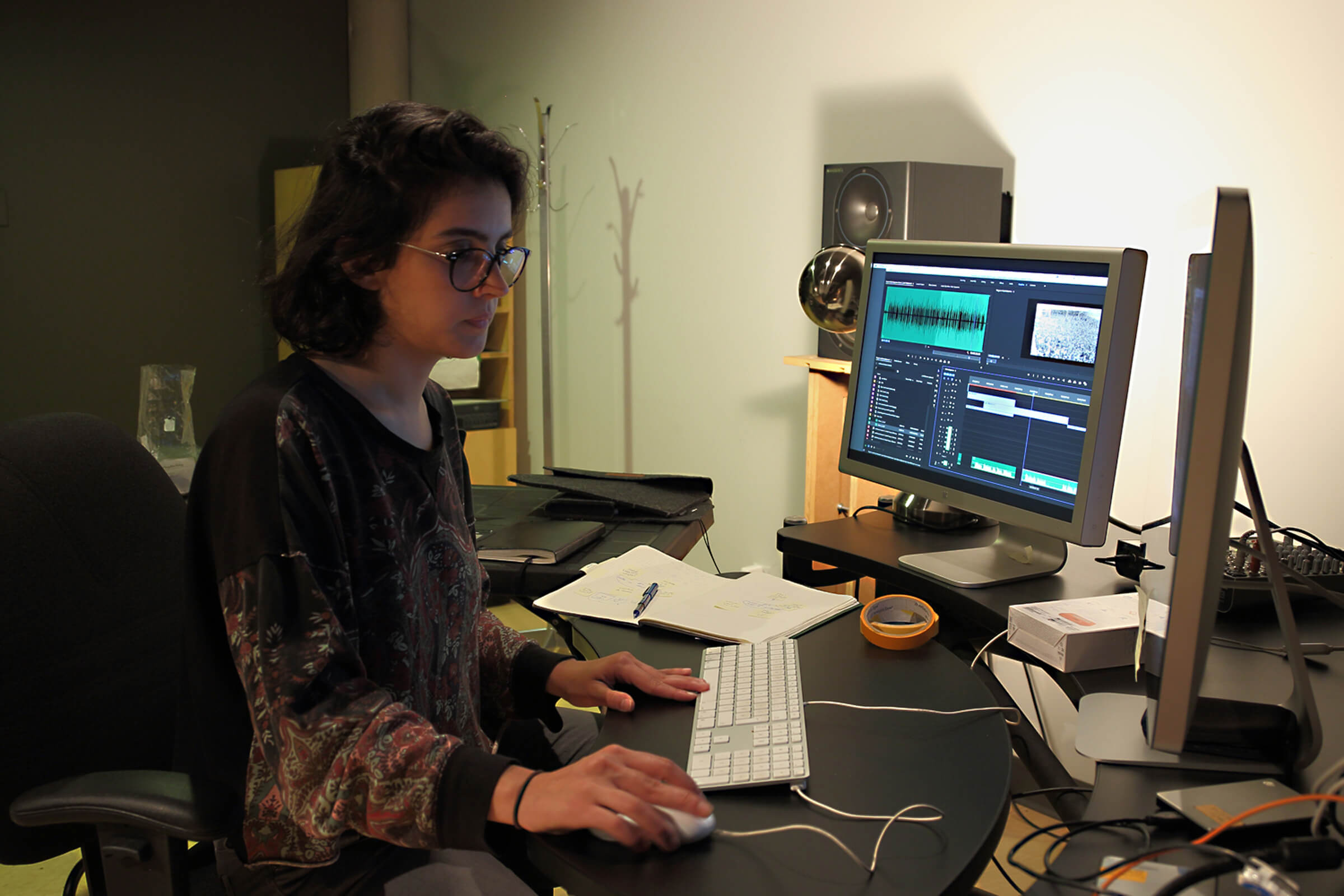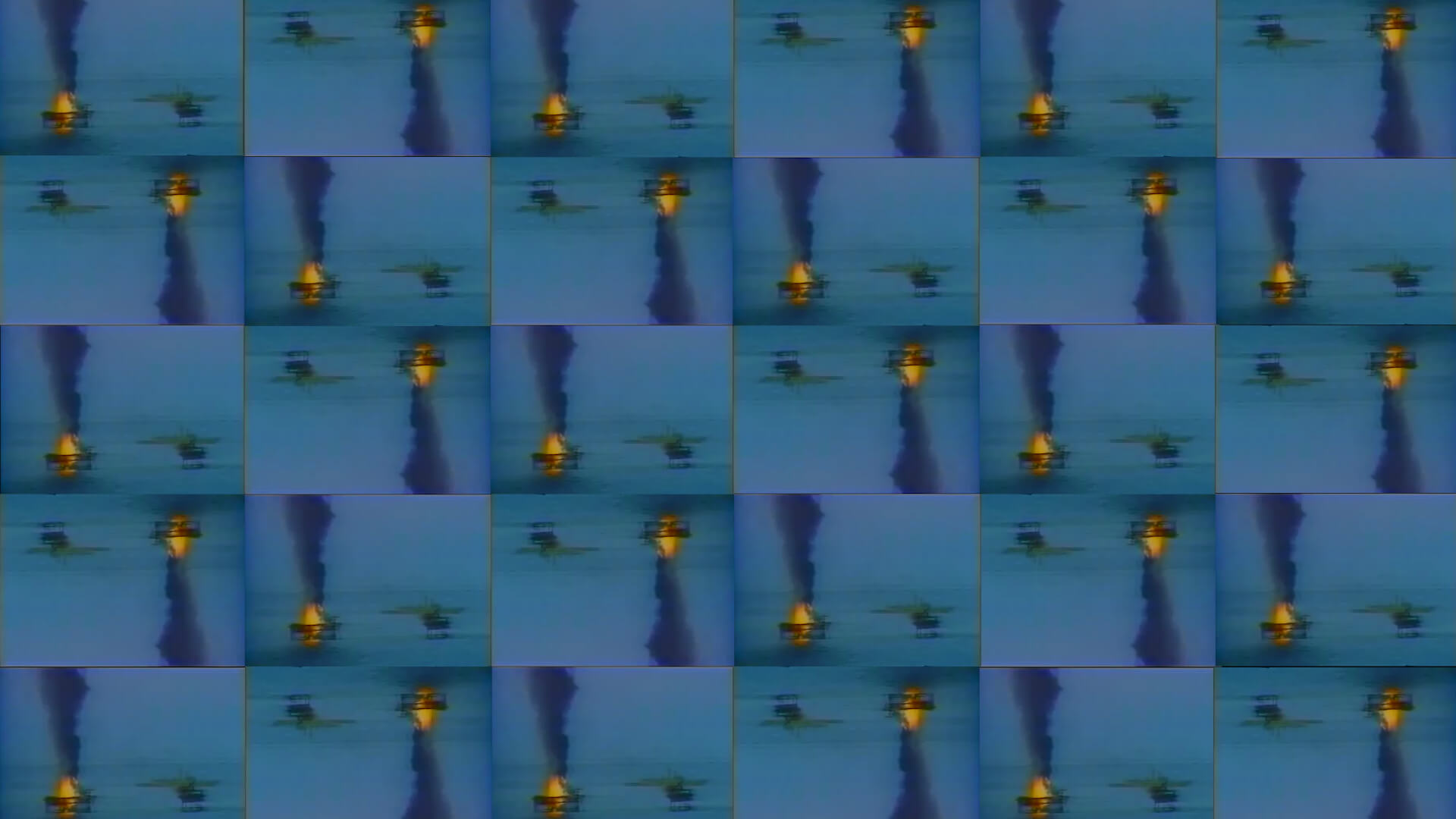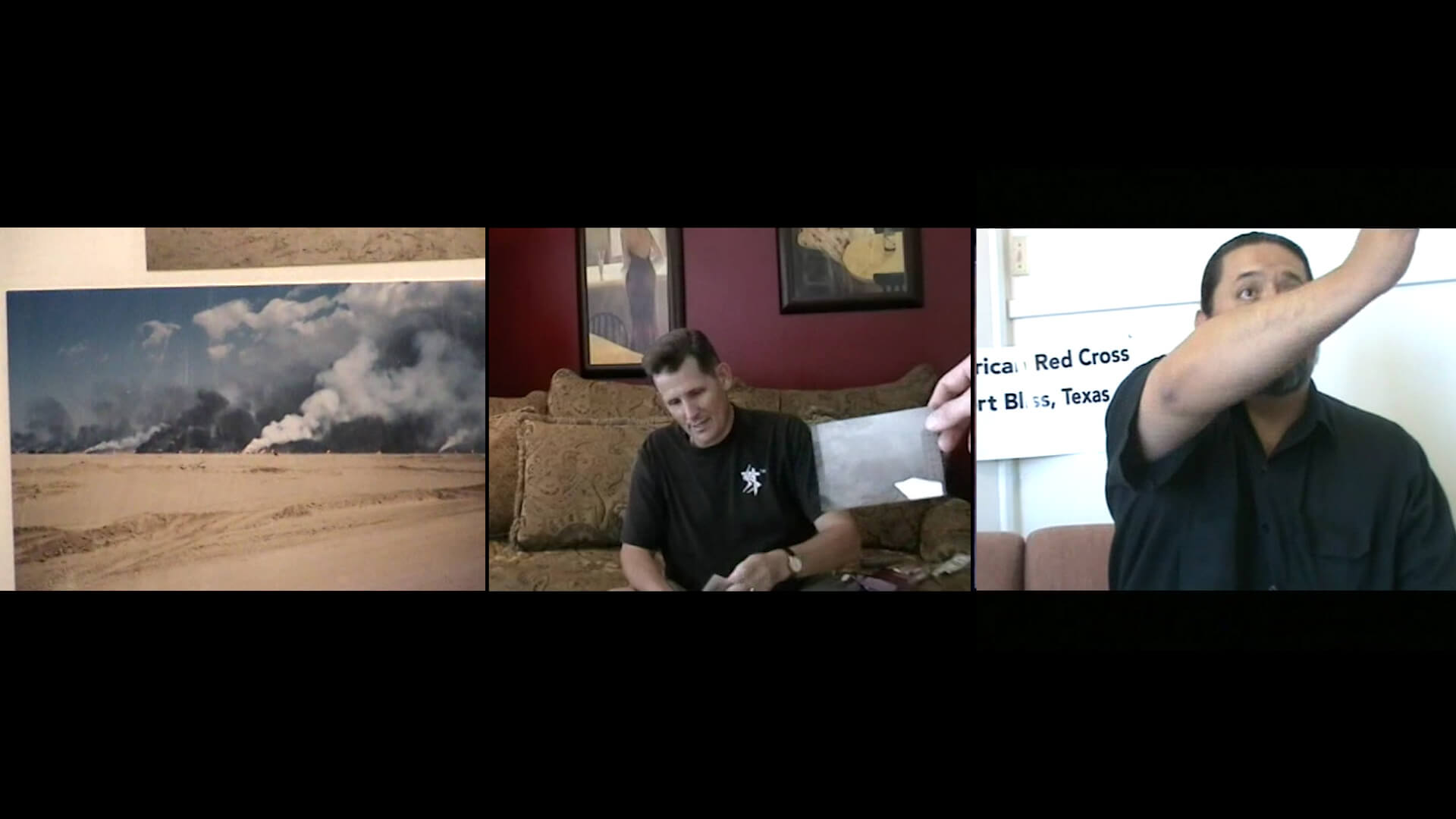Sanaz Sohrabi
What Remains From War Making and Image Making
Résidence
10 au 24 septembre 2018
POST SCRIPTUM
« Script for Groundless Images est né d’une volonté d’investigation des registres affectifs de militaires et vétérans sur lesquels s’appuie différents complexes militaires et médiatiques pour proposer et soutenir un narration structurée des traumas et de la guerre. Principalement écrit et édité avec du matériel d’archive trouvé sur le site web « Veterans Video History Project » de la « Library of Congress » (É.-U.), Script for Groundless Images focalise spécifiquement sur les entrevues colligées des vétérans de la Guerre du Golfe. Ce projet de collection d’entrevues vidéo, toujours en cours, se base sur les contributions volontaires des membres des familles des vétérans ou provenant de différentes institutions éducatives.
Script for Groundless Images propose la lecture de ces entrevues comme une signature de la représentation guerrière à travers les médias ; dès lors que ceux-ci emploient les images et les archives personnelles comme « memorabilias » afin de faciliter la création d’une narration hégémonique, unilatérale. Ces entrevues vidéos sont elles-mêmes des archives résiduelles mais contiennent à la fois d’autres formes de fragments d’archives photographiques et différents artefacts que les vétérans ont collectionnés pendant leur participation à la guerre.
Pour ce projet, j’ai travaillé avec un comédien improvisateur afin de créer une entrevue factice. En somme, j’utilise les archives vidéos comme pour fabriquer une histoire parallèle qui tente de s’insérer à travers les archives vidéo authetiques. C’est alors que Script for Groundless Images rompt et réinvente le fil conducteur voulu par la « Library of Congress » pour laisser place à l’incertitude et à l’aspect performatif des entrevues comme un outil de fabrication de la vraisemblance et de la remembrance.» – Sanaz Sohrabi, 2018
ENGLISH VERSION
“Script for Groundless Images” unpacks the affective registrars upon which military and media complexes rely to propel and sustain a homogeneous narrative of trauma and war. Written and edited, mostly, with archival material from the Library of Congress Veterans Video History Project, “Script for Groundless Images” primarily focuses on the interviews gathered from the veterans of the Persian Gulf War. The Veterans Video History Project comprises an ongoing collection of video-interviews contributed mostly either by veterans’ family members or various educational institutions. “Script for Groundless Images” looks at interview as a signature of media representation of war, which also employs images and personal archives as ‘memorabilias’ to facilitate the dominant narrative. These video-interviews are themselves archival residues while containing other forms of archival fragments such as photographs and various artifacts which interviewed veterans have collected during their involvement in the war. For this project, I worked with an actor and improvisor to create an interview which takes these video-archives both as its method and content to fabricate a parallel story and embed it back within these video archives. “Script for Groundless Images” divests from a cohesive storyline, which is the objective of the Library of Congress project. It reveals the uncertainty and performativity of interview as a tool for truthmaking and recollection.


